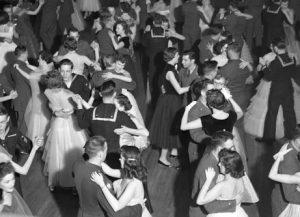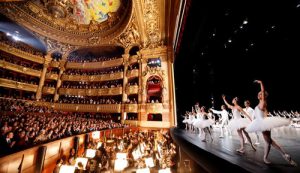When is Dance a Performing Art?
January 21, 2017In our previous post (Dance as Sport or Performing Art?), we set out the difference between sport and performing art. To now answer the question, “when is dance a performing art?”, we must understand when it fits into the definition of a performing art.
Is the Dance a Creative Activity?
Dance must be a creative activity in order to be classified as a Performing Art.

As we learned in the previous post, dance is specifically listed as a form of creative activity in the description of a performing art. Based also on the definition of dancing, moving rhythmically to music, dance involves the process of creating movement, rhythm, and steps.
Therefore, any dance can reasonably be considered a creative activity.
Is the Dance being performed?
Dance must be performed in order to be classified as a Performing Art.

Is the preparation of a dance for performance still considered a performing art? While an audience may be observing an in-studio or on-stage rehearsal, the purpose of the rehearsal is to practice and develop the dance rather than to present the dance to the audience. A dance being rehearsed in a studio can not yet be considered a performing art since it is lacking the performance purpose of the definition.

Are all styles of dance considered performing art? There are many different forms of dance, from social dance to highly technical classical ballet. Social dance is a category of dance with a social function and context, generally for participation rather than performance (Wikipedia). But is social dance being performed? Again, without the performance aspect, these forms of dance are excluded from the definition of Performing Art.
Therefore, not all forms of dance, and not all stages of a dance, are Performing Art as they are not being performed.
Is the Dance performed for an audience?
Dance must be performed for an audience in order to be classified as a Performing Art.

An audience is a group of spectators or listeners, especially at a public event such as a concert or play (Collins English Dictionary).
Is an Adjudicator part of the audience?
But if the performance is solely for adjudicators, does that exclude it from this category? Is an adjudicator considered a member of the audience?
An adjudicator has a specific role at a competition. They are appointed as judge to determine the results of the competition, to provide scores based on various aspects of the performance and presentation. As with a stage lighting technician, who does watch the performance in the process of their work, they are not a spectator simply observing the performance. They are not a member of the audience but a member of the competition production team.
What if the audience isn’t the intended audience?
A dance at a competition may be presented only to adjudicators, or may also involve an audience of the public who attend as spectators. With the audience present, the dance presentation then appears to fit within the definition of a performing art. Without the audience, it does not.
But is the dance being performed to the audience or to the adjudicator? Who is the intended audience, and does it matter?
The purpose of the competition is for the dance to be presented to the judges. If the dance is not being performed for the enjoyment of the audience, it no longer fits within the definition of a performing art. So does being presented for adjudication exclude it from also being performed for the enjoyment of the audience? Can it be both?

Consider that if the audience is not present, the dance presentation continues for the judges. On the other hand, if the judges are not present, the dance presentation would not continue for the audience as they are not the purpose of the performance. While an audience may be present, and may enjoy the performance, the audience being present is not essential to the event. In this case, the dance is not being performed for the audience but for the adjudicator.
Therefore, a competitive dance presentation is not a Performing Art as it is not performed for the enjoyment of the audience but for the adjudication of the judges.
Dance is a Performing Art when….

At a very basic level, we can then say that:
Dance is a Performing Art when presented for the enjoyment of an audience, without any competitive or adjudicated element.
When is Dance a Sport?
When dance is presented at a competition for adjudication, with or without an audience, it is no longer a performing art. So what does it become?
We continue the discussion in the next post…
- When is dance a sport?

